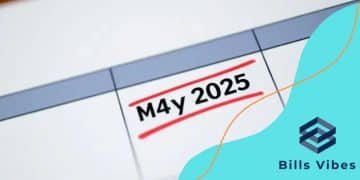Credit card fraud trends: stay informed to protect yourself

To combat credit card fraud, regularly monitor your accounts, report suspicious charges immediately, use strong passwords, and enable two-factor authentication to protect your financial information.
Credit card fraud trends are changing all the time, making it crucial for consumers to stay updated. Have you noticed unexpected charges on your statements? It’s essential to understand how these fraudsters operate and take proactive steps to protect yourself.
Understanding credit card fraud: a growing concern
Understanding credit card fraud is essential in today’s digital age. With the rise of online shopping and digital payments, it has become easier for fraudsters to exploit unsuspecting victims. Being knowledgeable about this type of fraud can help you protect yourself and your finances.
Credit card fraud can take many forms, and recognizing the signs is the first step in combating it. One common tactic used by criminals is phishing, where they trick individuals into providing their sensitive information via fake emails or websites.
Popular credit card fraud tactics
Fraudsters often employ various methods to steal personal data. Here are a few techniques they might use:
- Skimming devices placed on ATMs or gas pumps
- Phishing attacks via email or text messages
- Data breaches from retailers and service providers
- Account takeover techniques
Understanding how these methods work can significantly reduce your risk. Being cautious when sharing your credit card details is crucial.
Another significant aspect of credit card fraud is the speed at which it can occur. Often, transactions are made quickly before the victim even realizes their information has been compromised. Staying vigilant is key to protecting your finances.
Recognizing the warning signs
Being aware of the warning signs can help you catch potential fraud early. Some indications include:
- Unexpected charges on your statements
- Accounts you didn’t open
- Sudden changes in your credit score
If you notice any of these issues, it’s vital to take action immediately. Contacting your bank or credit card provider can help mitigate the damage.
To sum up, understanding credit card fraud and its tactics is vital. By staying informed, recognizing the warning signs, and taking proactive measures, you can help safeguard your financial information.
Current trends in credit card fraud schemes
Understanding the current trends in credit card fraud schemes can help individuals be proactive in protecting their finances. With technology constantly evolving, so are the tactics used by fraudsters. It’s essential to stay informed about these trends to avoid falling victim to scams.
One significant trend is the rise of card-not-present transactions. Fraudsters exploit online shopping as it doesn’t require the physical card. They use stolen credit card information to make purchases without ever needing to touch the actual card.
Types of fraud schemes
Several schemes are currently gaining traction among criminals. Here are some notable examples:
- Account takeover: Fraudsters gain access to a victim’s account, changing the account details to make unauthorized transactions.
- Clearance fraud: This occurs when counterfeit cards are used during end-of-season sales to take advantage of discounts.
- Refund fraud: This scheme involves returning items bought with stolen credit card information and claiming cash refunds.
These schemes are just a few examples of how fraudsters adapt to prevent detection. Criminals are using advanced techniques, including artificial intelligence, to bypass security measures. Keeping up with these methods is crucial.
Another alarming trend is the use of social engineering tactics. Fraudsters manipulate individuals into divulging personal information through clever deception. This method usually involves impersonating legitimate businesses or authorities to gain the target’s trust.
Staying ahead of fraudsters
Being aware of these trends is vital for prevention. Here are a few actions you can take to enhance your security:
- Regularly monitor your credit card statements for any unusual charges.
- Use complex passwords and enable two-factor authentication where possible.
- Educate yourself about phishing scams and how to recognize them.
In conclusion, staying informed about current trends in credit card fraud schemes is key to protecting yourself. By understanding these methods, you can take the necessary steps to safeguard your financial information.
How to recognize signs of credit card fraud

Knowing how to recognize signs of credit card fraud is critical for safeguarding your finances. Many people fall victim to fraud because they fail to notice the warning signs early enough. Awareness is the first step in prevention.
Fraudulent activity can take many forms and often leads to unexpected charges. One common sign is receiving an unfamiliar charge on your credit card statement. If you notice a transaction you didn’t make, it is essential to act quickly. Another red flag is receiving a new credit card that you did not apply for. This can indicate that someone has accessed your personal information.
Common red flags
Here are some common warning signs to look out for:
- Unexpected charges: Check your statements regularly for unfamiliar items.
- Reduced credit limit: If your credit limit suddenly decreases without explanation, it could signal fraud.
- Unsolicited account alerts: Alerts about activities you didn’t initiate can be a tip-off.
Being proactive in monitoring your accounts can help catch fraud early. Regularly check not only your bank statements but also your credit reports.
Additionally, if you start receiving bills for services you never signed up for, consider this a warning sign. Fraudsters may open accounts in your name, and these bills can be an indication of such actions. A sudden increase in spam or phishing emails can also suggest that your information has been compromised.
Steps to take if you suspect fraud
If you spot any signs of fraud, take immediate action:
- Contact your bank or credit card issuer right away.
- Freeze or cancel your card to prevent further charges.
- Report the fraud to the authorities if necessary.
By understanding and recognizing these signs, you can take meaningful steps to protect yourself from the impact of credit card fraud.
Preventive measures against credit card fraud
Implementing preventive measures against credit card fraud is essential for anyone who uses credit cards. Being proactive can help you avoid financial losses and stress. Taking simple steps can significantly reduce your risk of falling victim to scams.
One of the most effective preventive measures is to monitor your financial statements regularly. By checking your credit card accounts often, you can quickly spot any unauthorized transactions. If you notice an unfamiliar charge, report it immediately.
Key preventive measures
Here are some important strategies to keep in mind:
- Use strong passwords: Create complex passwords for your online accounts, and change them regularly.
- Enable two-factor authentication: This adds an extra layer of security by requiring additional verification to access your accounts.
- Be cautious with public Wi-Fi: Avoid making purchases or accessing sensitive information over public networks.
In addition to these strategies, it’s vital to shred any documents containing sensitive information before disposing of them. Personal data like credit card numbers or bank statements can be used by fraudsters if they fall into the wrong hands.
Another essential measure is to keep your devices secure. Regularly update your software and use antivirus programs to protect against malware. This can help prevent hackers from accessing your personal information.
Staying informed about scams
Being aware of common scams is also crucial. Educate yourself on how fraudsters operate and stay updated on new tactics. Subscribe to alerts from your bank or financial institutions regarding suspicious activities.
Lastly, if you are traveling, inform your bank. This can prevent your card from being flagged for unusual activity, which might lead to your card being denied while you are away.
What to do if you’re a victim of credit card fraud
If you find yourself a victim of credit card fraud, it’s essential to act quickly to minimize damage. The first step is to contact your bank or credit card issuer immediately. They can assist you in freezing your account, which prevents further unauthorized transactions. Reporting the fraud as soon as possible is crucial.
Next, review your recent transactions carefully. Identify any unauthorized charges and make a list of them. This information will be helpful when discussing the issue with your bank. Don’t forget to check all of your accounts for any suspicious activity.
Taking immediate action
Follow these steps to protect yourself:
- Report unauthorized charges: Use the customer service number on the back of your card to report fraud.
- Change your passwords: Update passwords for your online banking and shopping accounts to prevent further access.
- Monitor your accounts: Keep an eye on your statements regularly after the initial report to catch any further unauthorized activity.
Another important step is to file a police report. This can help with documenting the fraud and may be needed when disputing charges. Keeping records of all communications with your bank and the police can be beneficial.
Notify credit bureaus
Consider placing a fraud alert on your credit report with the major credit bureaus. A fraud alert warns creditors to take extra steps to verify your identity before issuing new credit. This can protect you from identity theft.
It’s also wise to check your credit report regularly. You can obtain a free report annually from each of the major credit bureaus. Look for any unfamiliar accounts or inquiries.
Lastly, remember to stay vigilant. Watch for signs of identity theft, such as mail you didn’t request or unexpected bills. Being alert to these signs can help you address any new issues that may arise.
In summary, protecting yourself from credit card fraud involves being vigilant and taking proactive measures. By understanding the warning signs and following the right steps if you fall victim to fraud, you can safeguard your financial health. Regular monitoring of your accounts, using strong security practices, and staying informed about new scams are essential in today’s digital age. Remember, your quick action can make a significant difference in minimizing the impact of credit card fraud.
FAQ – Frequently Asked Questions about Credit Card Fraud
What should I do if I notice a fraudulent charge on my credit card?
Contact your bank or credit card issuer immediately to report the fraudulent charge and freeze your account.
How can I prevent credit card fraud?
You can prevent credit card fraud by regularly monitoring your accounts, using strong passwords, and enabling two-factor authentication.
What should I watch for as signs of credit card fraud?
Common signs of credit card fraud include unfamiliar charges, receiving unexpected bills, or being denied credit due to unfamiliar accounts.
Is it important to report credit card fraud?
Yes, reporting credit card fraud is crucial as it helps protect your finances and can aid in the investigation of the crime.






